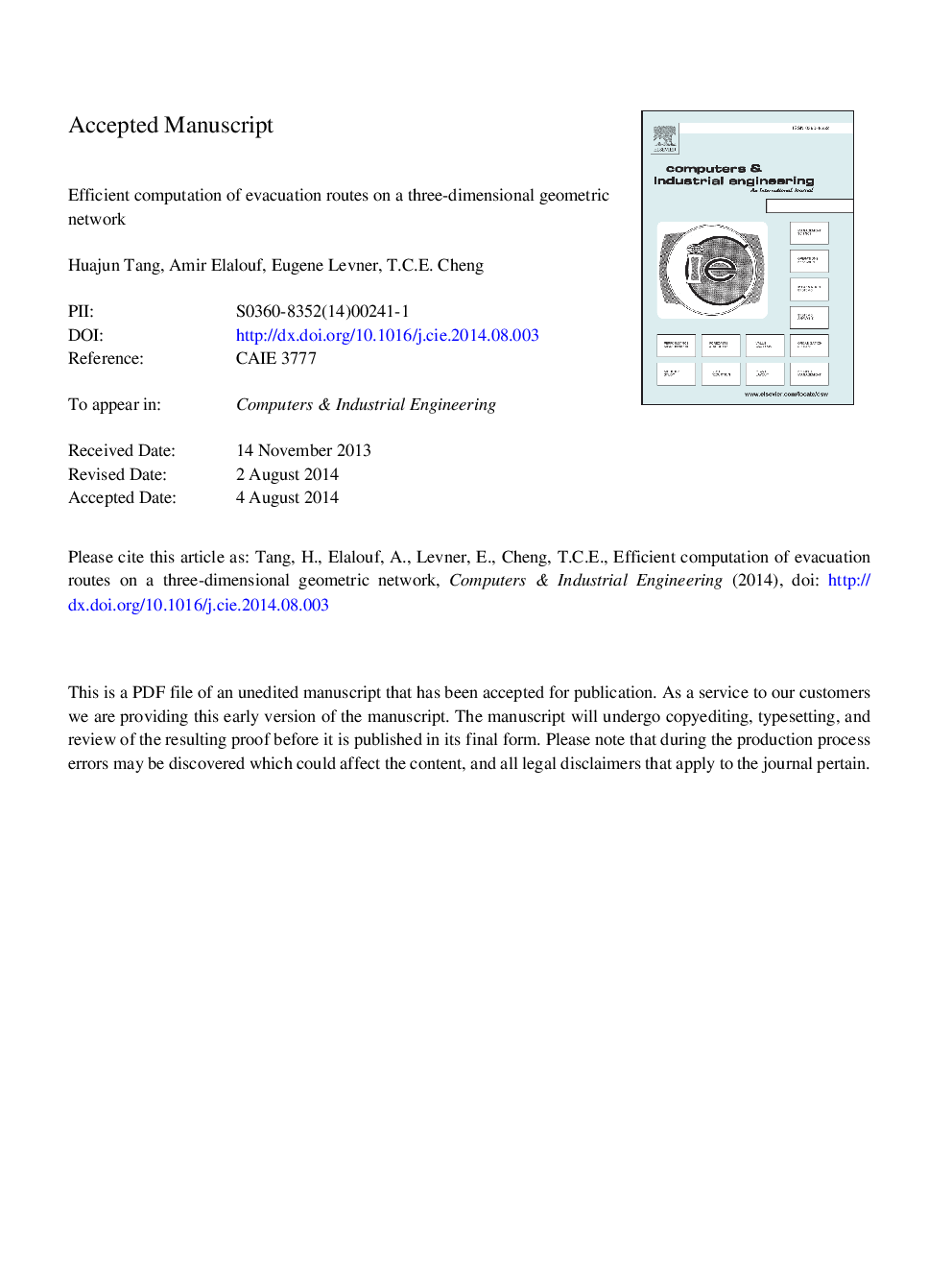| Article ID | Journal | Published Year | Pages | File Type |
|---|---|---|---|---|
| 7542366 | Computers & Industrial Engineering | 2014 | 32 Pages |
Abstract
We consider a real-time emergency evacuation problem that seeks to compute a set of rapid evacuation routes in a building. Given a three-dimensional geometric structure of the evacuation network, an emergency evacuation route is a sequence of movements of people away from the threat or actual occurrence of a hazard (such as a fire, a hidden bomb) to a safe exit in the network. In such a network each room/crossing/exit in the building is designated as a node and the corridors/staircases/links between the rooms are edges. The evacuation times assigned to the edges are normally distributed random variables. This stochastic routing problem subject to deadline constraints is NP-hard. We provide a new pseudo-polynomial-time dynamic programming algorithm to solve this problem. Based on this algorithm, we construct two types of approximation algorithm, namely a fully polynomial-time approximation scheme providing “almost-optimal” solutions and a fully polynomial-time approximately feasible scheme yielding a best “almost feasible” solution. We present a case study and results of computational experiments to illustrate the working and efficacy of the proposed solution methods, respectively.
Related Topics
Physical Sciences and Engineering
Engineering
Industrial and Manufacturing Engineering
Authors
Huajun Tang, Amir Elalouf, Eugene Levner, T.C.E. Cheng,
